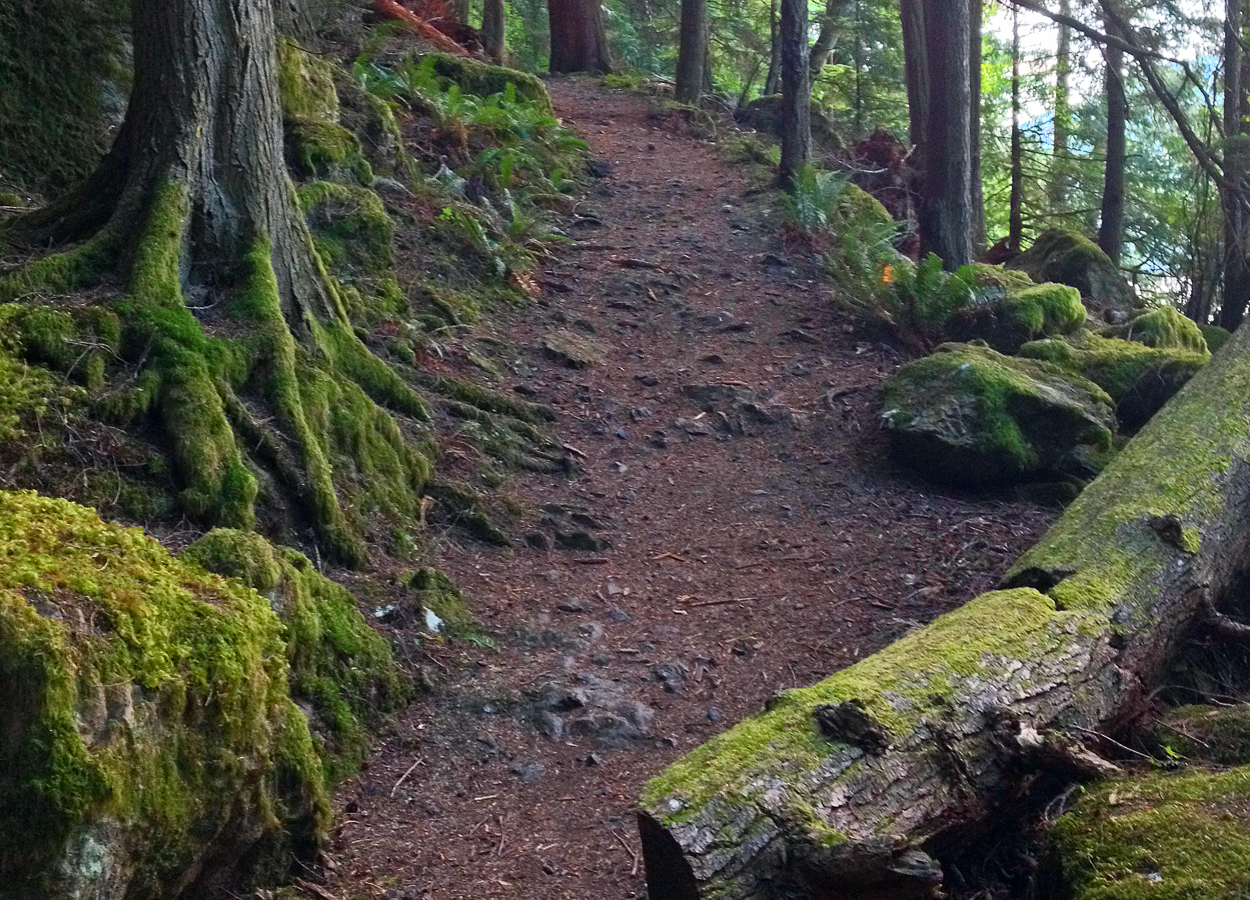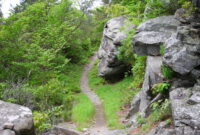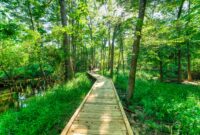Cascade hiking trails offer an unparalleled adventure, blending the thrill of challenging ascents with the breathtaking beauty of cascading waterfalls and lush landscapes. This guide delves into the diverse world of cascade hiking, from understanding trail difficulty levels and essential safety precautions to mastering navigation techniques and capturing the stunning vistas through photography.
We will explore globally renowned locations famed for their cascading trails, detailing unique characteristics and providing practical advice for planning your own unforgettable journey. Whether you’re a seasoned hiker or a novice adventurer, this resource equips you with the knowledge and confidence to embark on a safe and rewarding cascade hiking experience.
Defining Cascade Hiking Trails
Cascade hiking trails are characterized by a significant and often dramatic change in elevation over a relatively short distance, creating a series of cascading ascents and descents. These trails are not simply steep climbs; they involve a sequence of ups and downs, resembling a series of waterfalls or cascades, hence the name. This unique topography results in varied landscapes and challenging terrain, offering a diverse hiking experience.
The geographical features associated with cascade hiking trails are diverse and dynamic. Elevation changes are, of course, paramount, often resulting in significant changes in vegetation and microclimates within a short span of the trail. Water features are common, including streams, waterfalls, and even ponds, often fed by melting snow or rainfall higher up the cascade. The vegetation itself reflects the varying altitudes, with different plant communities occupying different zones along the trail. For example, a lower elevation section might feature lush forests, while higher elevations could display alpine meadows or even rocky, sparsely vegetated areas.
Difficulty Levels in Cascade Hiking Trails
The difficulty of a cascade hiking trail is determined by a complex interplay of factors. Steepness of inclines and declines is a major determinant, with steeper grades demanding greater physical exertion and potentially increasing the risk of falls. The trail’s length and overall elevation gain also contribute significantly to the difficulty level. A longer trail with substantial elevation changes will naturally be more challenging than a shorter, less demanding one. The trail’s surface condition is another critical factor. Loose rocks, uneven terrain, and exposed roots can increase the risk of injury and slow progress, adding to the difficulty. Finally, weather conditions can significantly impact the difficulty of a hike. Inclement weather, such as rain, snow, or strong winds, can make navigation more challenging and potentially dangerous. For instance, a relatively easy trail can become extremely difficult and dangerous during a blizzard. Experienced hikers often categorize trails using a rating system (e.g., easy, moderate, strenuous, challenging) that considers these factors. These ratings serve as a guide, but individual fitness levels and experience also play a crucial role in determining personal difficulty.
Popular Cascade Hiking Trail Locations
The Cascade Range, stretching from Northern California to British Columbia, boasts a diverse array of hiking experiences, many featuring stunning waterfalls and cascading streams. These trails offer varying levels of difficulty, catering to both novice and experienced hikers. The following locations are renowned globally for their exceptional cascade hiking trails.
Globally Renowned Cascade Hiking Trail Locations
Five locations stand out for their exceptional cascade hiking trails and surrounding natural beauty. Each offers a unique experience, from challenging climbs to gentle strolls alongside roaring waterfalls.
| Location | Trail Difficulty | Notable Features | Access Information |
|---|---|---|---|
| Multnomah Falls, Oregon, USA | Easy to Moderate | Iconic waterfall, paved trails, stunning views of the Columbia River Gorge, easily accessible viewpoints. | Located within the Columbia River Gorge National Scenic Area; easily accessible by car with ample parking. |
| Paradise, Mount Rainier National Park, Washington, USA | Moderate to Strenuous | Numerous trails with varying waterfall views, lush subalpine meadows, glacier views, potential for wildlife sightings (deer, marmots). | Located within Mount Rainier National Park; requires park entrance fee; various trailheads with varying access points. Shuttle services are available during peak season. |
| Whistler, British Columbia, Canada | Easy to Strenuous (depending on chosen trail) | Variety of trails ranging from gentle riverside walks to challenging mountain ascents, numerous waterfalls, stunning alpine scenery, opportunities for other activities (mountain biking, skiing). | Located in Whistler Blackcomb resort area; accessible by car; numerous trailheads with varying access points. |
| Waterfalls of the North Cascades National Park, Washington, USA | Moderate to Strenuous | Numerous waterfalls, rugged and remote trails, old-growth forests, diverse wildlife, challenging terrain. | Located within North Cascades National Park; requires planning and preparation due to remoteness; limited access points; some trails require permits. |
| Yosemite National Park (specific areas), California, USA | Easy to Strenuous (depending on chosen trail) | While not solely focused on cascades, Yosemite features several trails with significant waterfalls like Yosemite Falls and Bridalveil Fall; iconic granite cliffs, giant sequoia trees, diverse landscapes. | Located within Yosemite National Park; requires park entrance fee; numerous trailheads with varying access points; shuttle services available during peak season. |
Environmental Impact and Conservation
The popularity of Cascade hiking trails presents a double-edged sword: while offering incredible recreational opportunities, it also poses significant challenges to the delicate ecosystems these trails traverse. Understanding and mitigating the environmental impact of this activity is crucial for ensuring the long-term preservation of these natural wonders. Increased foot traffic, improper waste disposal, and habitat disruption are among the key concerns.
The cumulative effects of numerous hikers traversing these trails can lead to significant environmental degradation. Soil erosion, particularly on steep slopes, is a major problem, often resulting in the loss of vegetation and increased sedimentation in nearby waterways. This, in turn, can negatively impact aquatic life and water quality. Furthermore, the introduction of invasive species through hikers’ clothing, footwear, or equipment can disrupt the balance of native plant and animal communities.
Minimizing Environmental Impacts of Cascade Hiking
Minimizing the environmental impact of Cascade hiking requires a multi-pronged approach focusing on responsible trail use and effective conservation strategies. This includes promoting education and awareness among hikers regarding Leave No Trace principles, implementing sustainable trail management practices, and fostering community involvement in conservation efforts. Effective strategies also involve careful planning and management of trail access to prevent overuse and damage to sensitive areas.
Leave No Trace Principles on Cascade Hiking Trails
Leave No Trace (LNT) principles provide a framework for minimizing human impact on natural environments. Adherence to these principles is paramount for preserving the integrity of Cascade hiking trails. Proper waste disposal, staying on designated trails to minimize erosion, respecting wildlife by maintaining a safe distance, and minimizing campfire impacts are all essential components of LNT ethics. For example, packing out all trash, including food scraps and toilet paper, is crucial. Hikers should also avoid disturbing plants or animals and leave the area as they found it, ensuring no visible evidence of their presence.
Successful Conservation Efforts in Cascade Hiking Trail Ecosystems
Several successful conservation initiatives demonstrate the positive impact of collaborative efforts in preserving Cascade hiking trail ecosystems. For instance, the ongoing restoration projects in areas affected by past trail erosion, often involving the replanting of native vegetation and the construction of erosion control structures, have shown significant success in restoring damaged habitats. These projects often involve partnerships between government agencies, non-profit organizations, and local communities, highlighting the importance of collaborative conservation strategies. Another successful example is the implementation of trail maintenance programs that involve volunteers in tasks such as trail clearing, bridge repair, and signage installation, ensuring trails remain safe and accessible while minimizing environmental impact. These programs contribute to the longevity of the trails and the protection of the surrounding ecosystems.
Photography and Visual Representation of Cascade Hiking Trails
Capturing the breathtaking beauty of Cascade hiking trails through photography requires a keen eye for detail and a strategic approach to capturing the essence of these stunning natural landscapes. The interplay of light, water, and the surrounding environment presents unique photographic opportunities, demanding careful consideration of technique and equipment.
The ideal photographic techniques for capturing the beauty of cascade hiking trails involve a blend of planning and improvisation. Understanding the unique challenges presented by these environments—varying light conditions, dynamic water movement, and often challenging terrain—is crucial.
Ideal Photographic Techniques and Equipment
Effective photography on Cascade trails necessitates a versatile approach. A high-quality DSLR or mirrorless camera with interchangeable lenses provides the flexibility needed. A wide-angle lens is essential for capturing the grandeur of the cascades and the surrounding landscape, while a telephoto lens allows for detailed shots of water features and textures. A sturdy tripod is invaluable for maintaining stability, especially in low-light conditions or when using longer exposures to capture the movement of water. Polarizing filters can enhance color saturation and reduce glare from the water’s surface, resulting in clearer, more vibrant images. A waterproof camera bag is recommended to protect equipment from the elements. Understanding the principles of exposure, aperture, and shutter speed is vital for controlling depth of field, motion blur, and overall image quality. Experimenting with different settings is key to mastering the art of capturing the dynamic nature of cascading water.
Composition and Perspective
Effective composition is crucial in conveying the scale and beauty of the scene. Utilizing the rule of thirds, leading lines (such as trails or riverbanks), and framing elements (like overhanging branches or rocks) can create visually appealing and dynamic images. Experimenting with different perspectives – shooting from high vantage points for panoramic views or from lower angles to emphasize the power and scale of the water – will add depth and visual interest. Consider using foreground elements to add context and scale to the image. For instance, a hiker’s silhouette against a vast waterfall can emphasize the magnitude of the natural wonder.
Descriptive Words and Phrases for Cascade Hiking Trails
Choosing the right words to describe the visual experience of a cascade hike is as important as capturing the images themselves. A strong vocabulary allows for effective communication of the sensory experience.
The following words and phrases effectively communicate the visual experience of a cascade hike:
- Rushing, cascading water
- Emerald pools and shimmering spray
- Towering cliffs and verdant slopes
- Sun-dappled forests and mossy rocks
- Misty waterfalls and ethereal rainbows
- Jagged peaks and dramatic vistas
- The roar of the water, a symphony of nature
- A tapestry of colors, greens, and blues
- Breathtaking panoramas and majestic scenery
- Serene tranquility and powerful energy
A Breathtaking Vista from a Hypothetical Cascade Hiking Trail
Imagine standing atop a granite cliff overlooking a vast canyon. Below, a powerful cascade plunges hundreds of feet, its water a churning mass of white and turquoise, its roar a constant, invigorating soundtrack. The spray rises in a fine mist, catching the sunlight to create a shimmering rainbow that arches across the chasm. The canyon walls, sculpted by centuries of erosion, are a tapestry of greens, browns, and grays, punctuated by patches of vibrant wildflowers clinging to the steep slopes. The air is crisp and cool, carrying the scent of pine and damp earth. Far in the distance, snow-capped peaks pierce the azure sky, their majestic silhouettes adding to the breathtaking panorama. The sheer scale of the landscape is overwhelming, a testament to the raw power and enduring beauty of nature. The sun dips below the horizon, casting long shadows and painting the sky in hues of orange, purple, and gold, enhancing the already awe-inspiring vista. The experience is one of profound awe and humbling connection with the natural world.
Summary
Embarking on a cascade hiking adventure promises an enriching experience that combines physical challenge with the reward of stunning natural beauty. By understanding the unique characteristics of these trails, prioritizing safety, and respecting the environment, you can create lasting memories while contributing to the preservation of these magnificent ecosystems. So, plan your trip, pack your gear, and prepare to be awestruck by the power and elegance of nature’s cascading wonders.




